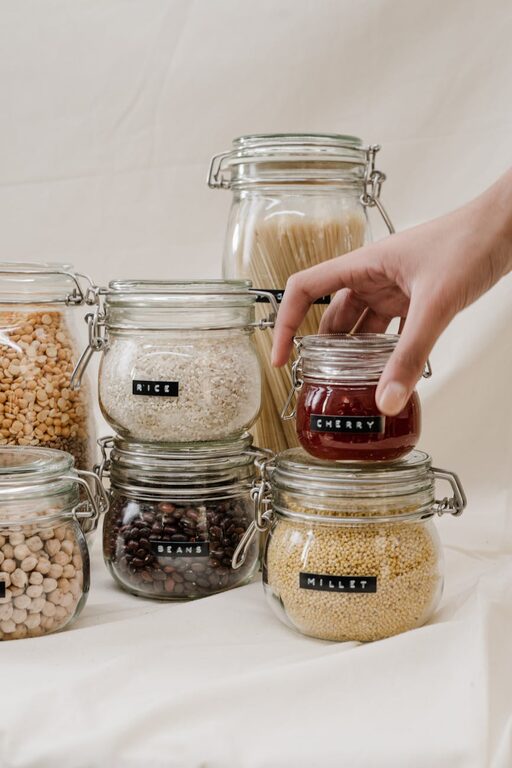How to Plan Meals from Pantry Staples for Easy, Stress-Free Cooking

How to Plan Meals from Pantry Staples for Easy, Stress-Free Cooking
Cooking every day can sometimes feel overwhelming, especially when you’re short on fresh ingredients or time. Fortunately, having a well-stocked pantry can help you whip up tasty meals without last-minute grocery store runs. Planning meals around pantry staples not only saves money but also encourages creativity in the kitchen and reduces food waste.
In this post, we’ll explore practical ways to plan your meals using pantry staples and share helpful tips to make meal prep easier and more enjoyable.
—
Why Plan Meals Around Pantry Staples?
Before diving into meal ideas, it’s useful to understand why pantry staples form the perfect base for meal planning:
– Convenience: Pantry items are shelf-stable, meaning you always have ingredients on hand for quick meals.
– Cost-effective: Buying staples in bulk or on sale helps cut costs.
– Less waste: Using pantry ingredients means you’re not throwing away perishables.
– Versatility: Staple items like beans, rice, pasta, and canned vegetables can be easily combined in countless ways.
—
Step 1: Take Inventory of Your Pantry Staples
Begin by checking what you already have:
– Dry goods: rice, pasta, lentils, beans, oats, flour, sugar, nuts, seeds
– Canned items: tomatoes, chickpeas, black beans, corn, coconut milk, tuna
– Condiments and spices: olive oil, vinegars, soy sauce, mustard, salt, pepper, herbs, chili flakes
– Broths and stocks: vegetable, chicken, or beef stock cubes or liquids
– Other basics: peanut butter, honey, dried fruit, baking powder/soda
Writing everything down helps you visualize your options and reduces impulse buying.
—
Step 2: Consider Your Fresh Ingredients
Pantry staples shine brightest when paired with fresh produce or proteins. Plan meals that mix these two groups seamlessly:
– Fresh vegetables like onions, garlic, carrots, and potatoes complement many pantry-based dishes.
– Eggs, cheese, or frozen meats can add protein.
– Keep an eye on seasonal produce that can be stored longer, such as squash or apples.
—
Step 3: Choose Your Meal Frameworks
Certain meals naturally accommodate pantry staples. Here are some frameworks to consider:
#### Soups and Stews
– Use canned tomatoes, beans, broth, and spices.
– Add fresh or frozen veggies for texture.
– Simmer all together for a filling, comforting meal.
#### Pasta Dishes
– Cook pasta from dry pantry stock.
– Prepare a sauce with canned tomatoes, garlic, olive oil, and herbs.
– Toss in canned or fresh vegetables and protein for balance.
#### Rice Bowls or Stir-Fries
– Start with cooked rice or grains.
– Stir-fry frozen or fresh veggies with soy sauce or spices.
– Add canned beans or leftover meat for protein.
#### Salads and Wraps
– Use canned beans or tuna in salads.
– Combine with fresh greens, nuts, and dressings made from pantry ingredients.
– Wraps made from tortillas and pantry proteins make quick lunches.
—
Step 4: Sample Meal Ideas from Pantry Staples
Here are some easy meal ideas using typical pantry items:
– Chickpea and Tomato Curry: Sauté onions and garlic, add canned chickpeas, canned tomatoes, coconut milk, and curry powder. Serve over rice.
– Black Bean Tacos: Heat canned black beans with spices. Serve in tortillas with salsa, cheese, and fresh lettuce.
– Pasta Primavera: Cook pasta, toss with olive oil, canned or frozen mixed vegetables, garlic, and parmesan cheese.
– Lentil Soup: Simmer dried lentils with broth, canned tomatoes, onions, carrots, and herbs.
– Tuna Salad: Mix canned tuna, mayonnaise or mustard, chopped pickles or celery. Serve on bread or over greens.
– Rice and Beans: Cook rice and canned beans together with cumin, garlic, and chili powder.
—
Step 5: Tips to Make Pantry Meal Planning Easier
– Keep a checklist: Maintain a list of pantry essentials you frequently use.
– Organize your pantry: Group similar items together for quick access.
– Plan batch cooking: Prepare larger portions of soups, stews, or rice dishes to use throughout the week.
– Experiment with spices: A varied spice rack transforms simple ingredients.
– Rotate stock: Use older items first to minimize waste.
—
Bonus: Pantry Staples to Always Have on Hand
Consider these essentials to keep stocked:
– Rice and pasta
– Lentils and dried beans
– Canned tomatoes and beans
– Broth cubes or liquid stock
– Olive oil and vinegar
– Garlic and onions
– Basic herbs and spices (oregano, basil, cumin, chili powder)
– Peanut butter or nut butters
– Flour and baking soda/powder for baking
—
Conclusion
Planning meals around your pantry staples is a practical way to reduce stress in the kitchen while creating tasty dishes. By knowing what you have, pairing it with fresh ingredients, and choosing adaptable meal formats, you can enjoy cooking without last-minute scrambles or wasted food.
Start by taking inventory of your pantry today and experiment with some of the meal ideas shared above. With a little planning, pantry staples can become your best cooking friends!




